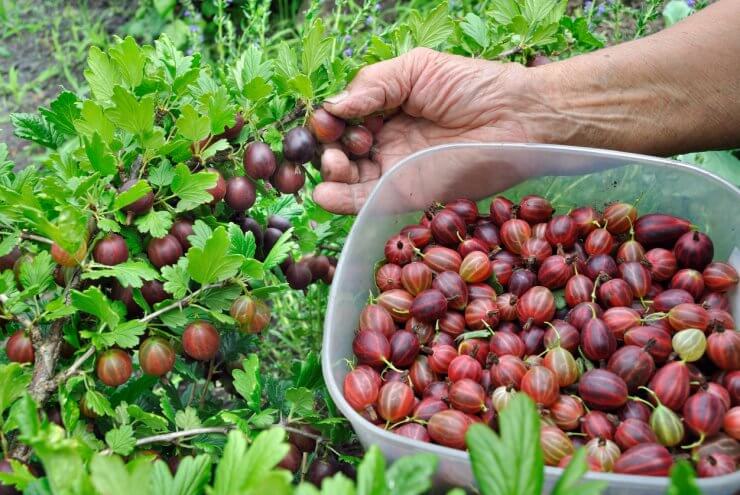
Harvesting gooseberries
You planted. You watered and weeded. You pruned and fertilized. You watched and waited. Slowly but surely, your gooseberries ripened from their early color (usually green) to the final color of your chosen cultivar.
Now, here’s something to remember about gooseberry bushes: you don’t have to wait until the berries are ripe before you pick them.
What?
If you want to make a classic gooseberry jam, you may be looking for that certain tartness that will usually only come from not-quite-ripe gooseberries. Remember, we’re talking about American gooseberry cultivars, which are sweeter than their European counterparts.
So, you can pick some of your gooseberries while they’re still green and firm. You can use under-ripe gooseberries to make jam, sauce, or pie. As an added benefit, those unripe berries contain pectin, which is what helps jams, jellies, and preserves stick together. And those berries that you pick early will leave your gooseberry bush with more energy to make the remaining gooseberries sweeter. But when the berries turn plump and juicy and the flower stem has turned brown and completely dry, it’s time to pick them. Don’t wait!
Gooseberries, for all their thorniness, produce very tender-skinned fruit. The skin is so tender that you might burst some of the berries as you’re picking them. So, pick gently. Use garden snips if that helps. And when you harvest your gooseberries, don’t pile them up on each other—they’ll burst. Collect them in a long, shallow container, in layers no more than two berries deep. This is why you rarely see fresh gooseberries at the grocery store; they don’t travel well.
Gooseberries don’t ripen all at once, so you’ll want to head out to the garden daily once the first gooseberries are ripe. If you have a really big crop of gooseberries, you can harvest them by laying a tarp under the bush and then giving it a good shake. Just know that you’ll wind up with some burst berries.
Either way, as you’re picking and sorting, it’s a good idea to pull off any dried flower ends and trim off the stems. That will make things easier for you once you start preparing your next gooseberry recipe.
Store your freshly-picked gooseberries in the fridge, unwashed. They’ll stay fresh for up to two weeks. If you want your gooseberries to last longer, wash them, freeze them in a single layer on waxed paper, and then put them into an airtight container or freezer bag.
You can also dehydrate your gooseberries. Use only fully ripe berries. You can dehydrate them in your oven if you don’t have a dehydrator: set the oven to 140 degrees F. Put the berries on a baking sheet in a single layer. Leave them in the oven for about four hours. Check every half hour or so to see how they’re doing. When they look like little prunes, they’re about done. Let them cool, then store them in an airtight container.
If, in your harvesting time, you discover gooseberries that have fallen to the ground of their own accord, don’t bother taking them into the kitchen. Those berries are overripe. You can leave them for the local wildlife, or you can put them into the compost pile.
Do you know exactly when to harvest your gooseberries? Please tell us what you look for when getting ready to harvest.


 Previous
Previous


I look for the first sign of blush on my berries.